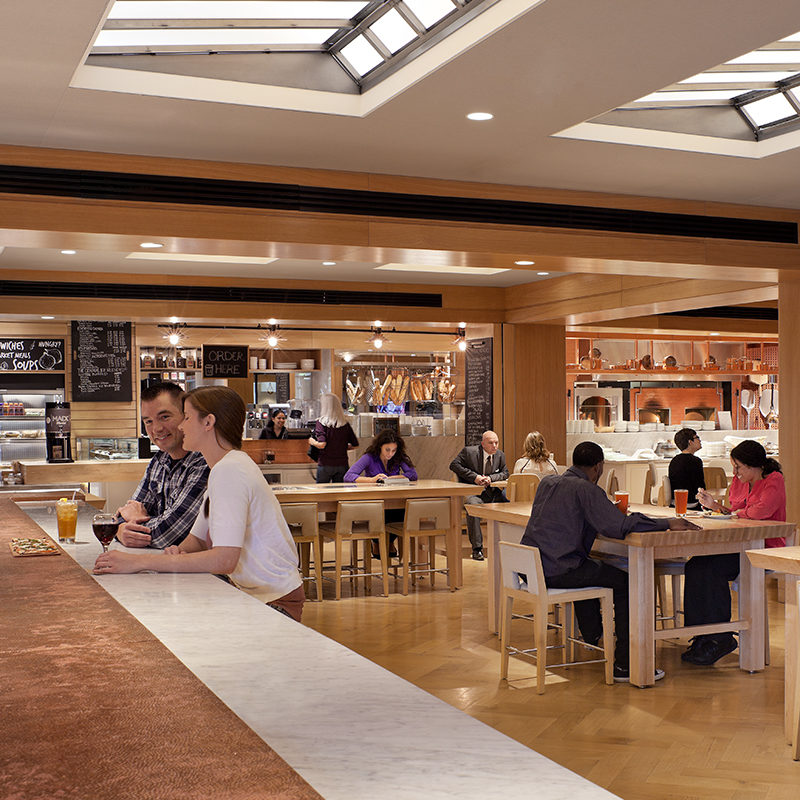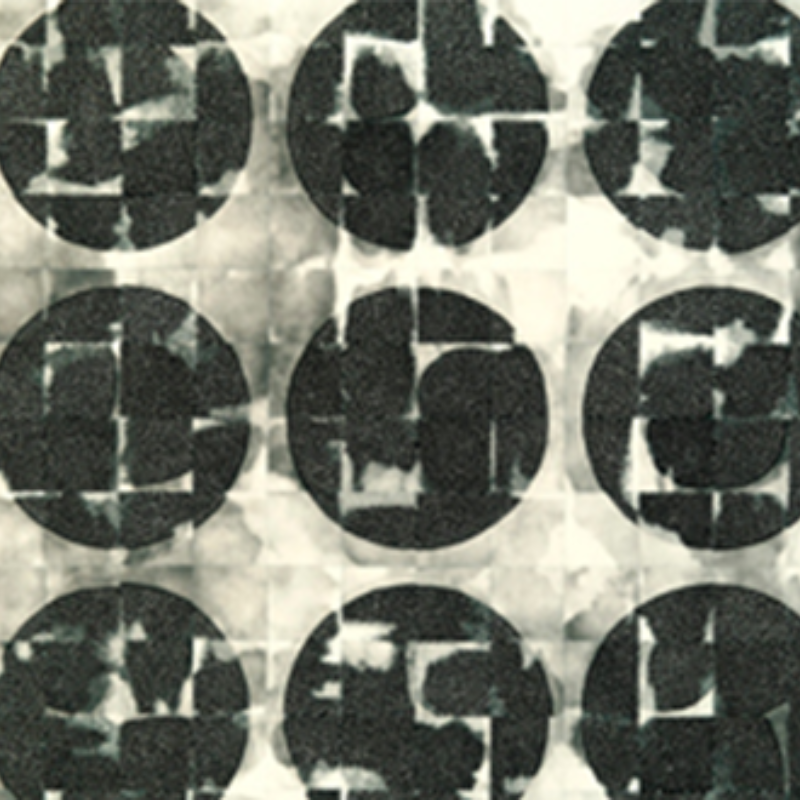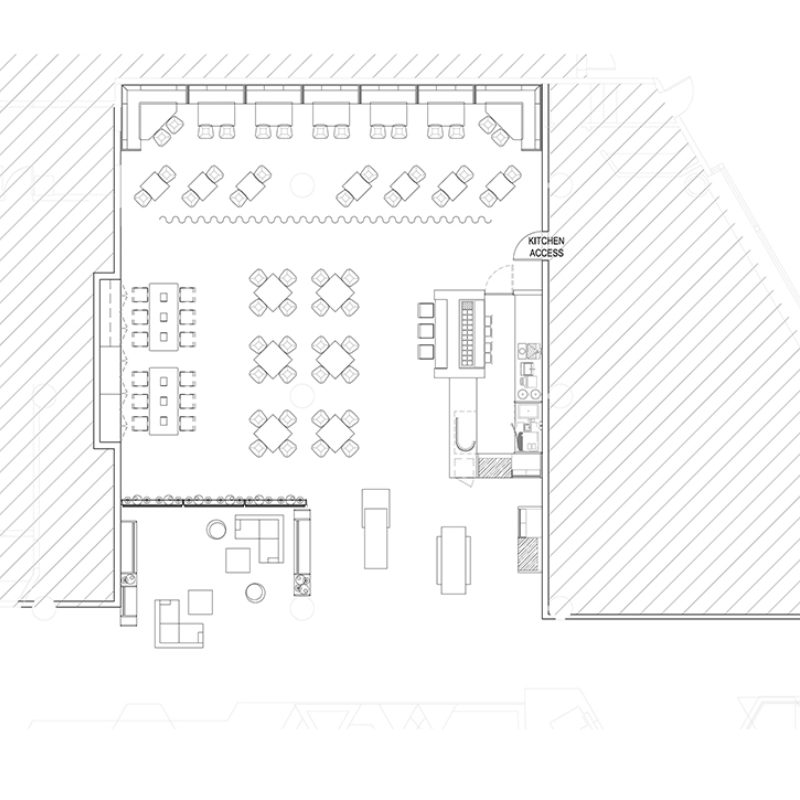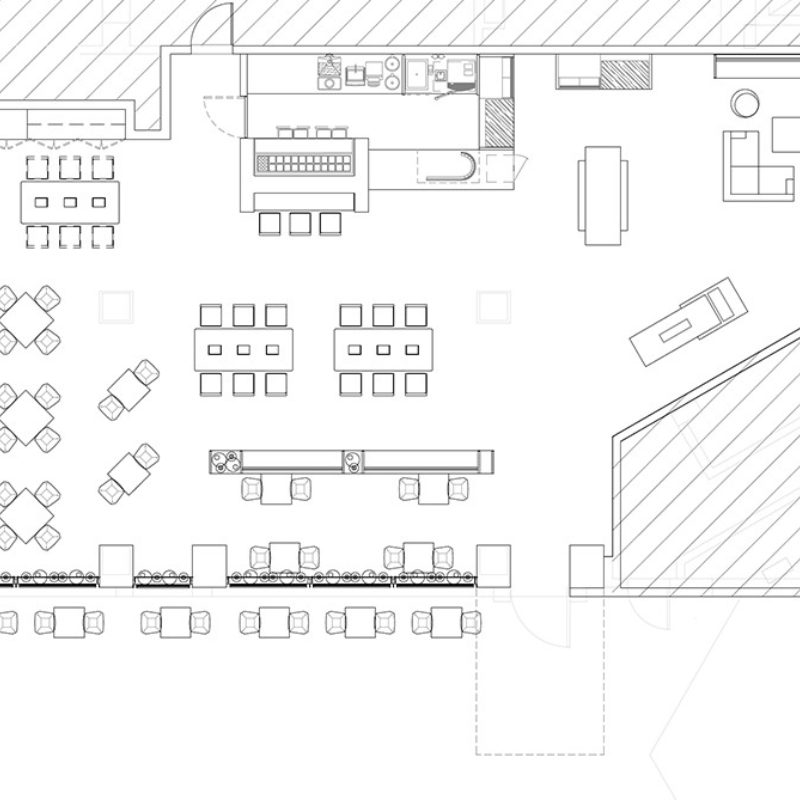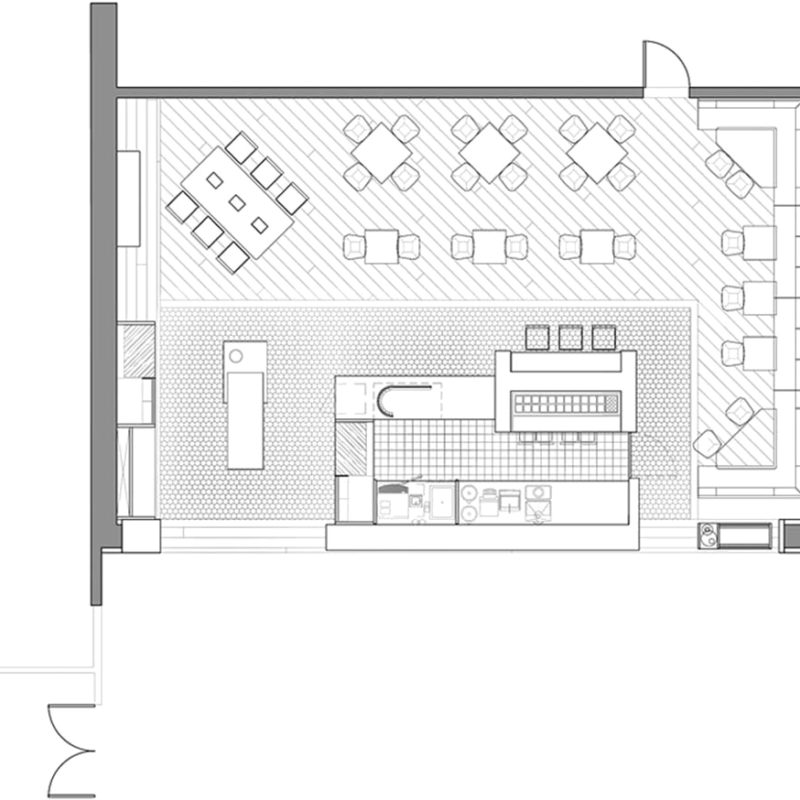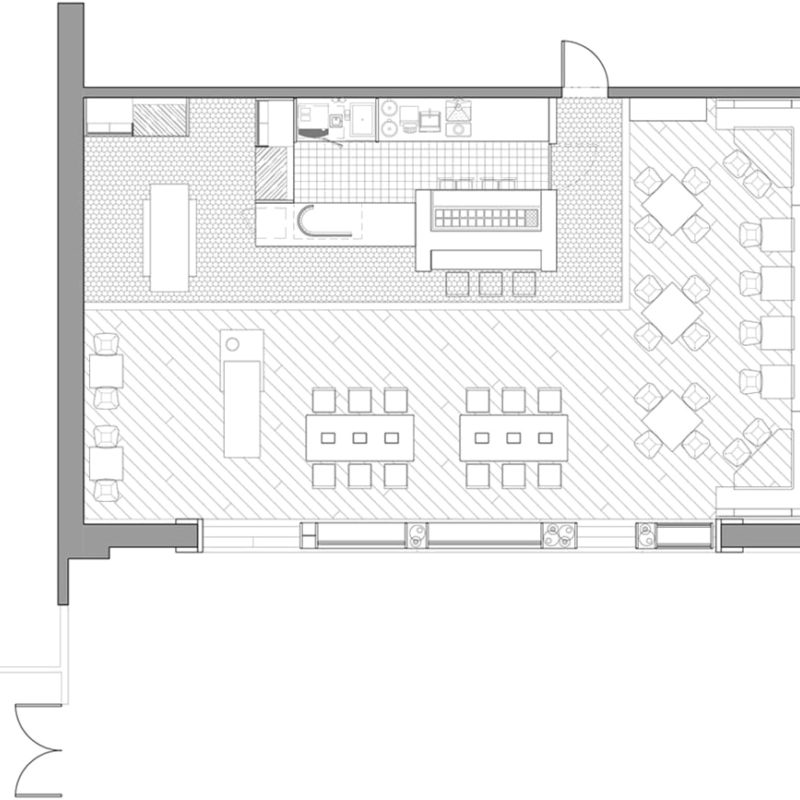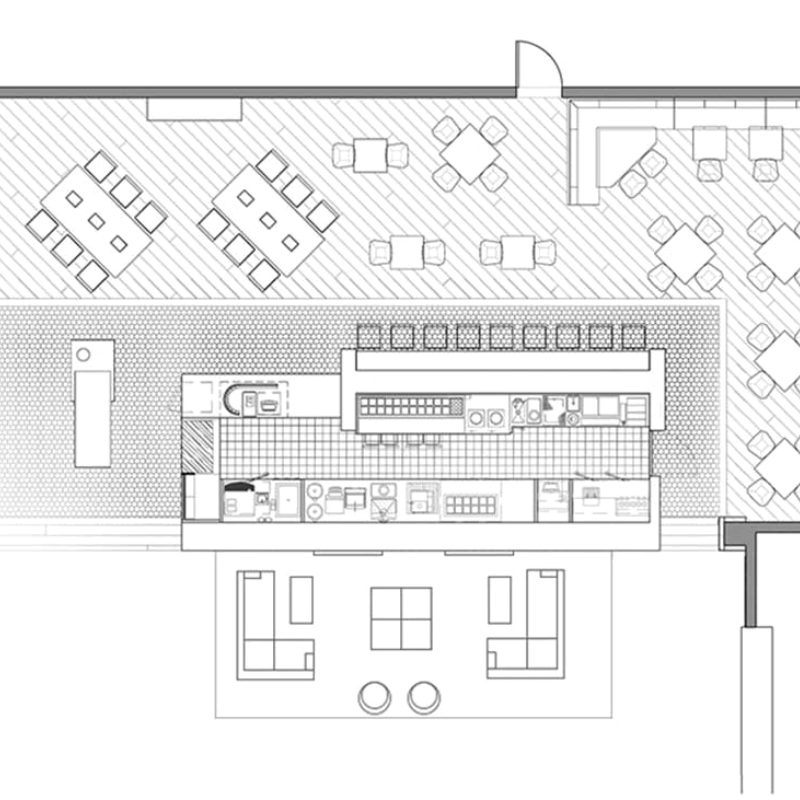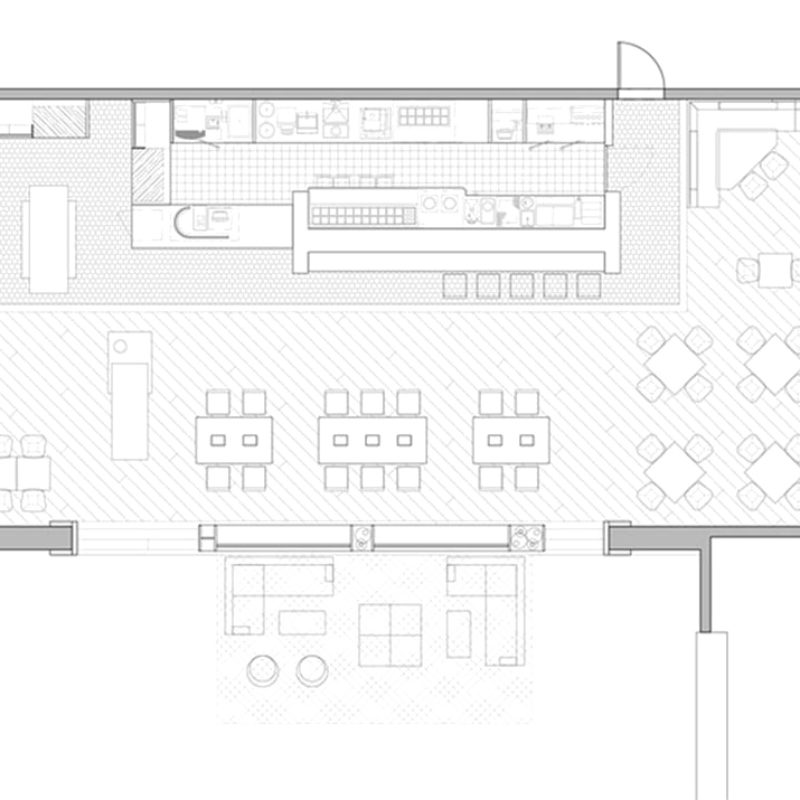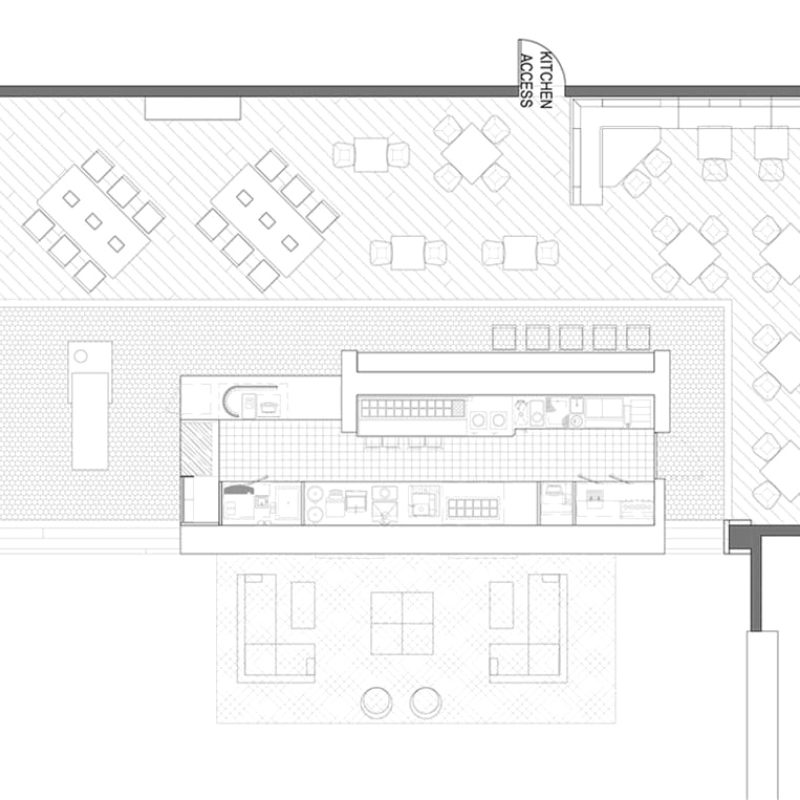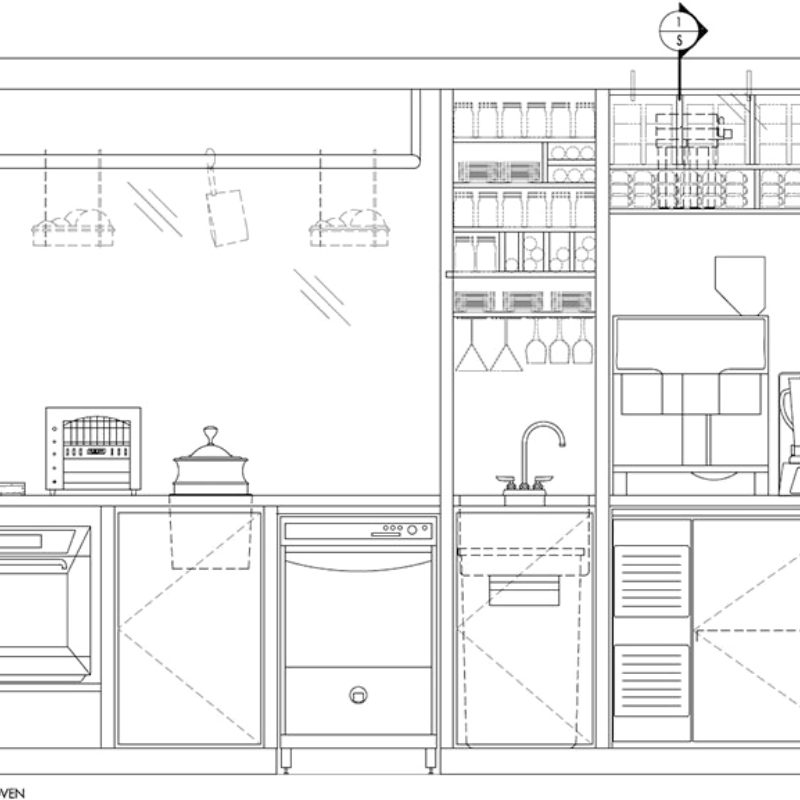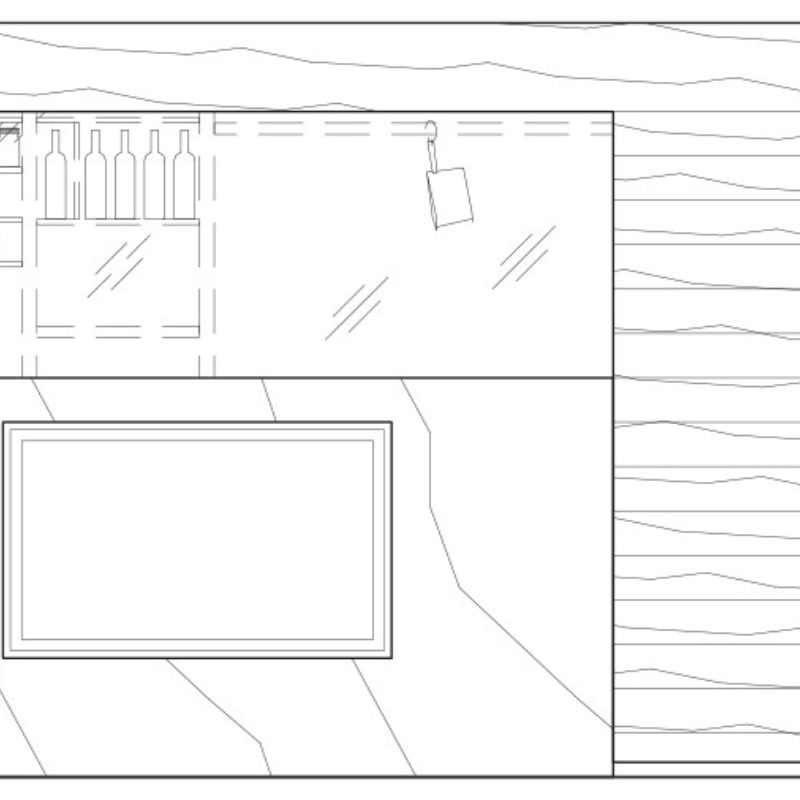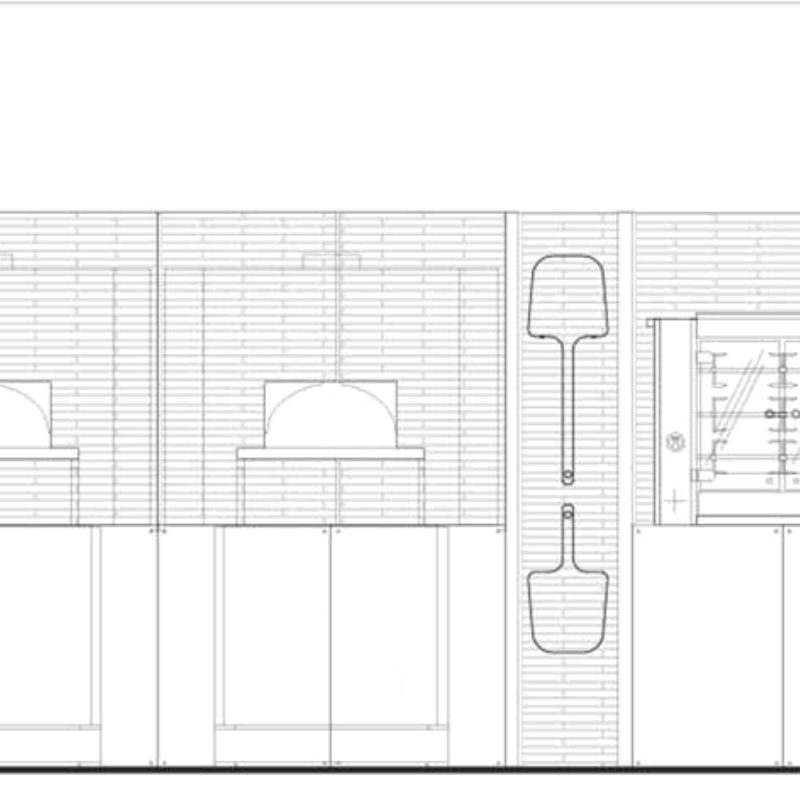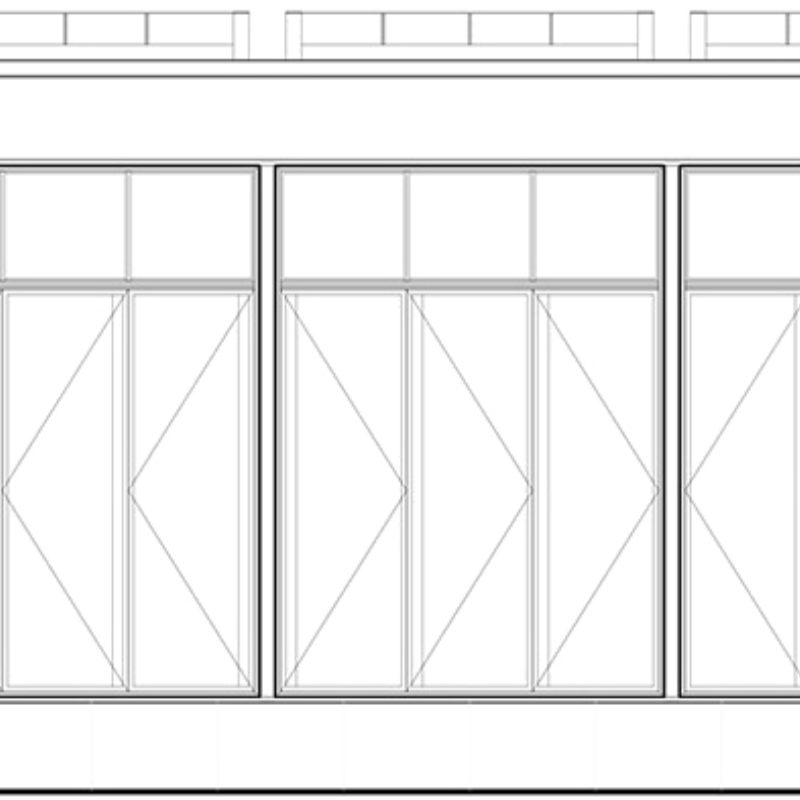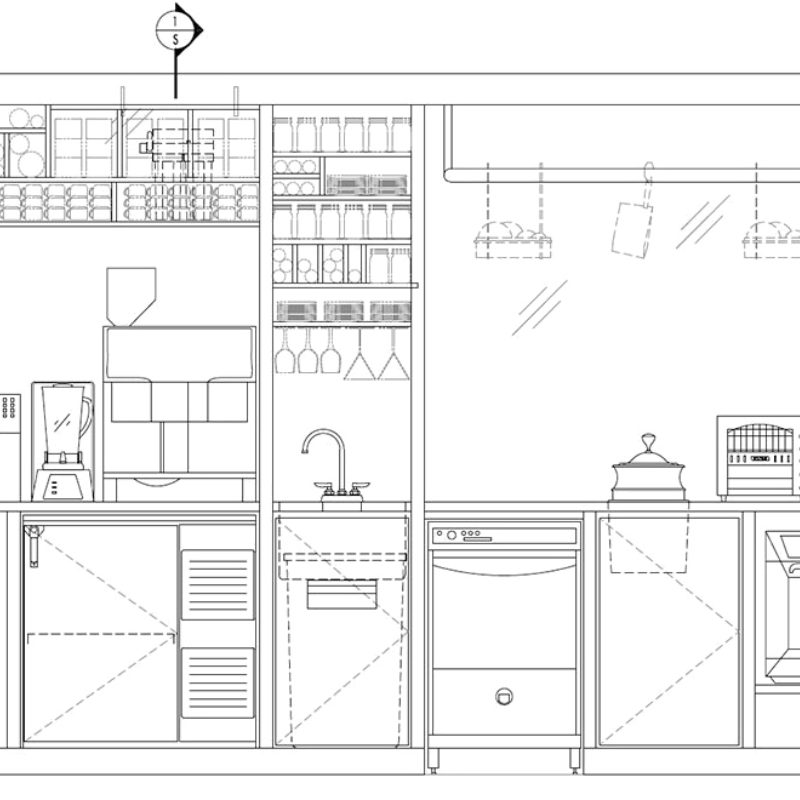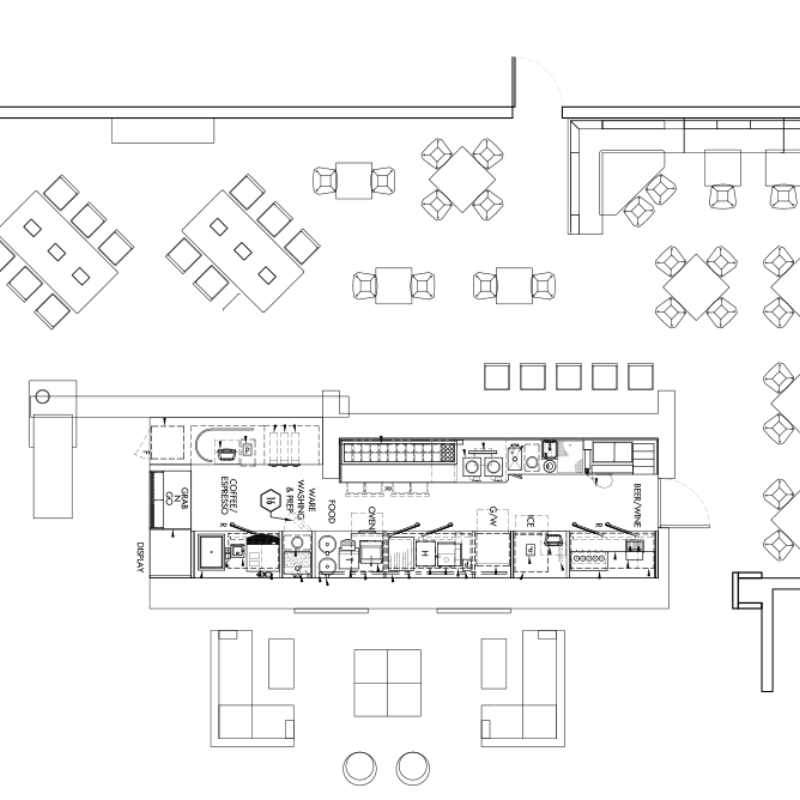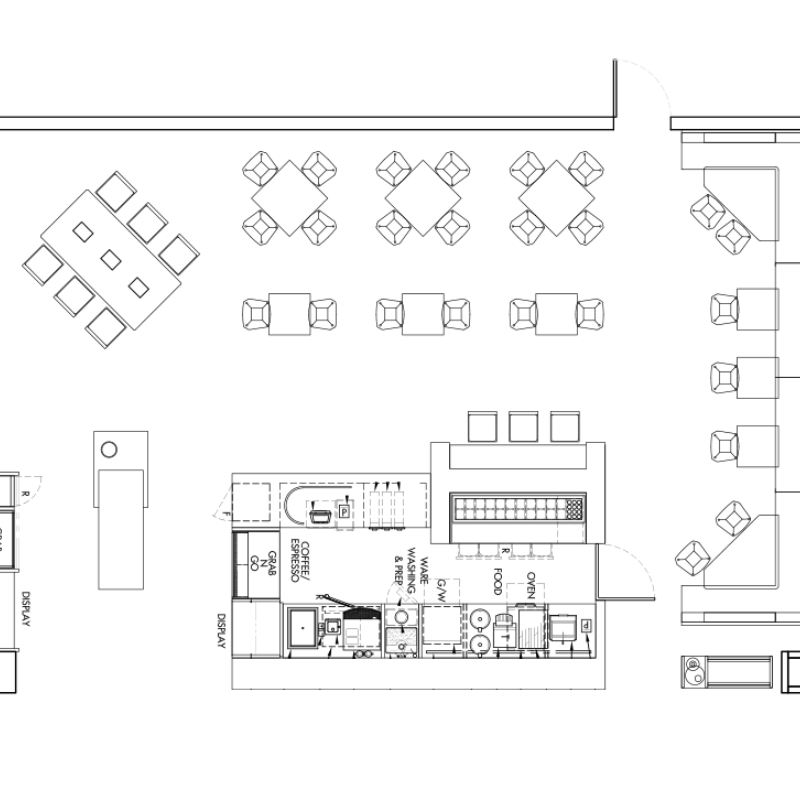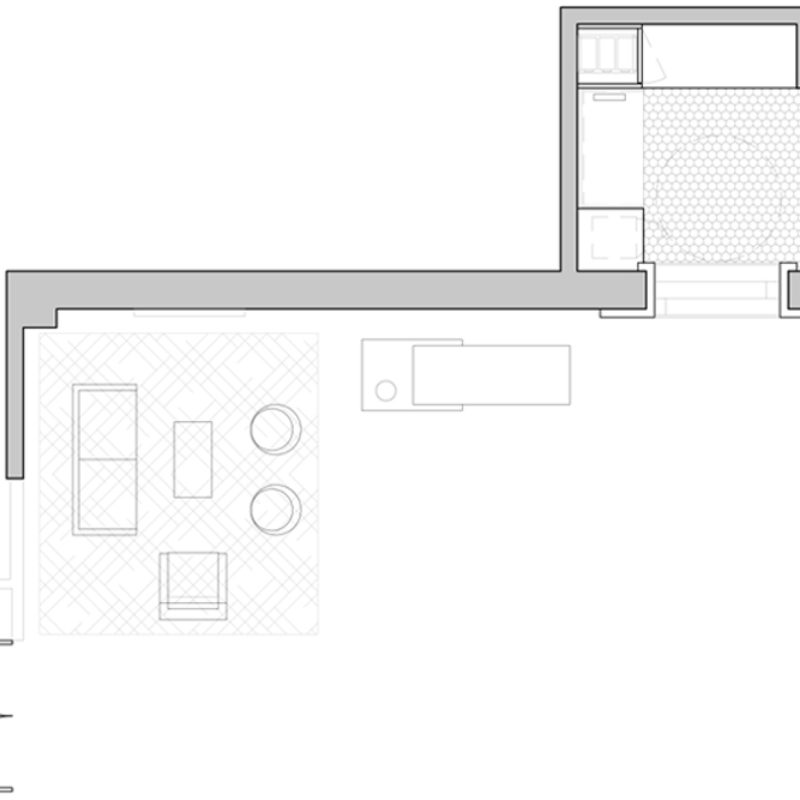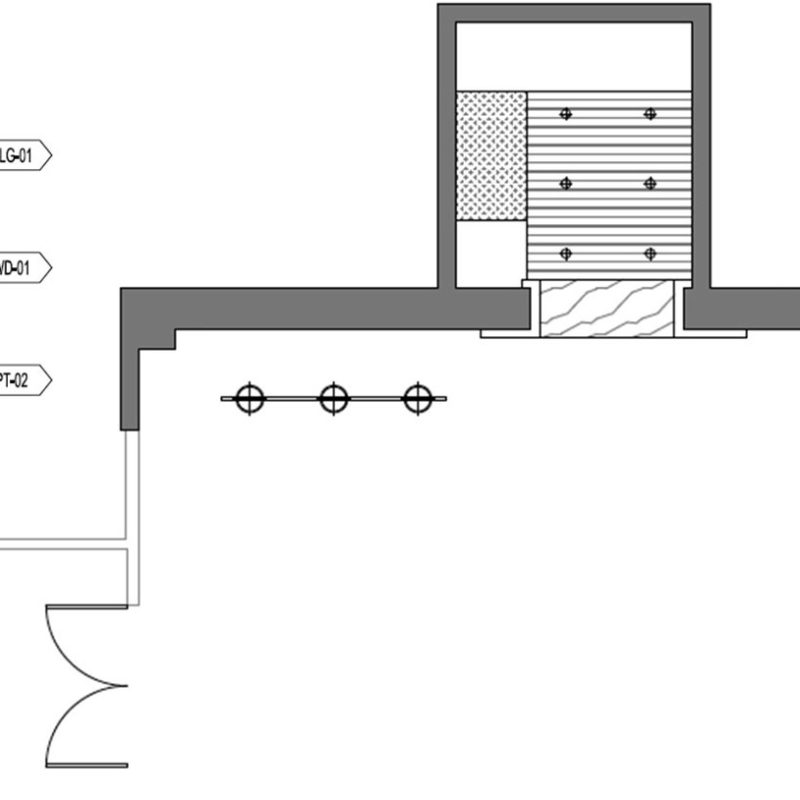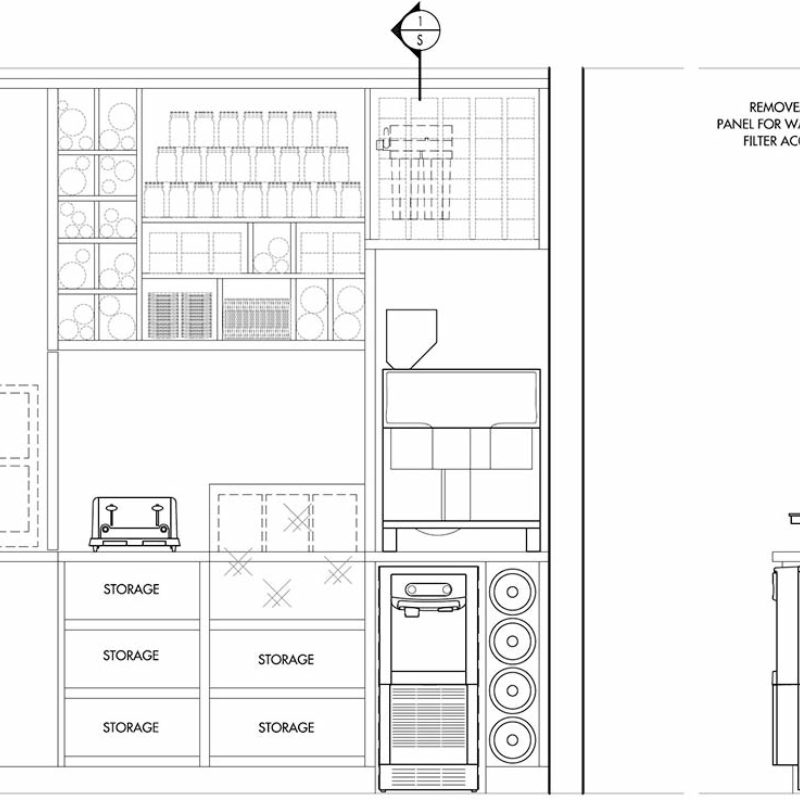Architectural Design Strategy
Traveling Customers
Architectural Design Strategy
As the hotel is a temporary home for our traveling customers, Made Market is positioned to function more as a kitchen and pantry instead of posturing as a restaurant only. By combining a gourmet market place area that feels and functions like a pantry at home, an open counter where customers can make a fresh plate to-go, and a dining room that encourages group gathering and informal snacking, we offer a space that works all day for everyone—sort of like home.
BY DAY BY NIGHT
No one wants to sit at a bar in the morning, and no one wants to grab a drink where they had breakfast. We developed a counter concept that could inconspicuously adapt to the very different cravings of our customers as it transitions after dark. We also designed key elements featuring different functions throughout the day. For example, the lighting system has a unique skylight element that provides varying intensity and color temperature settings allowing for space transitions from a bright marketplace to a warm and more intimate evening experience.
Design Elements
Designed with Scalability in Mind
Design Elements
-
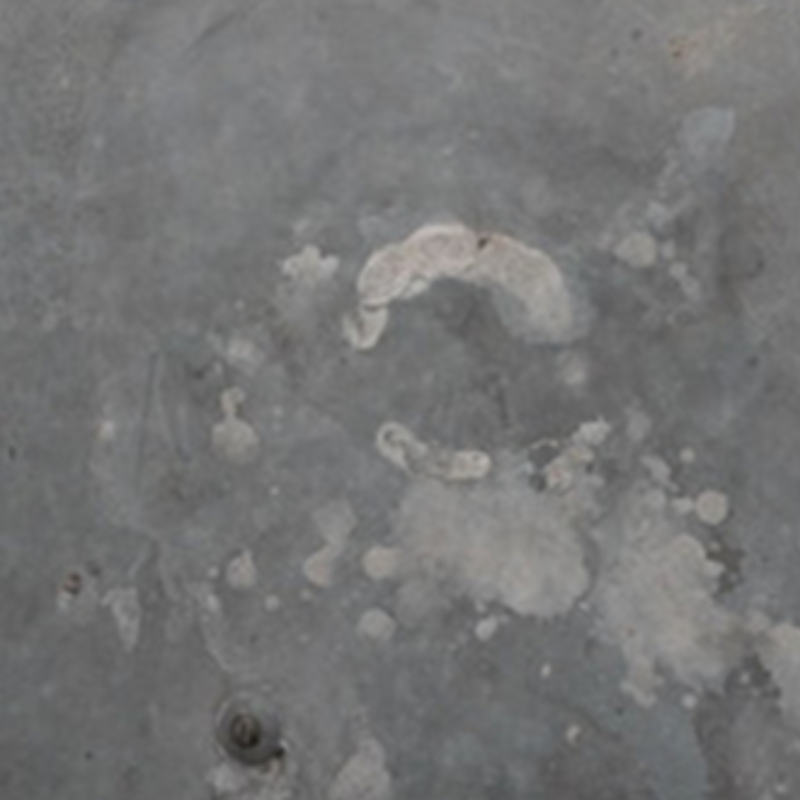

Materials
Materials
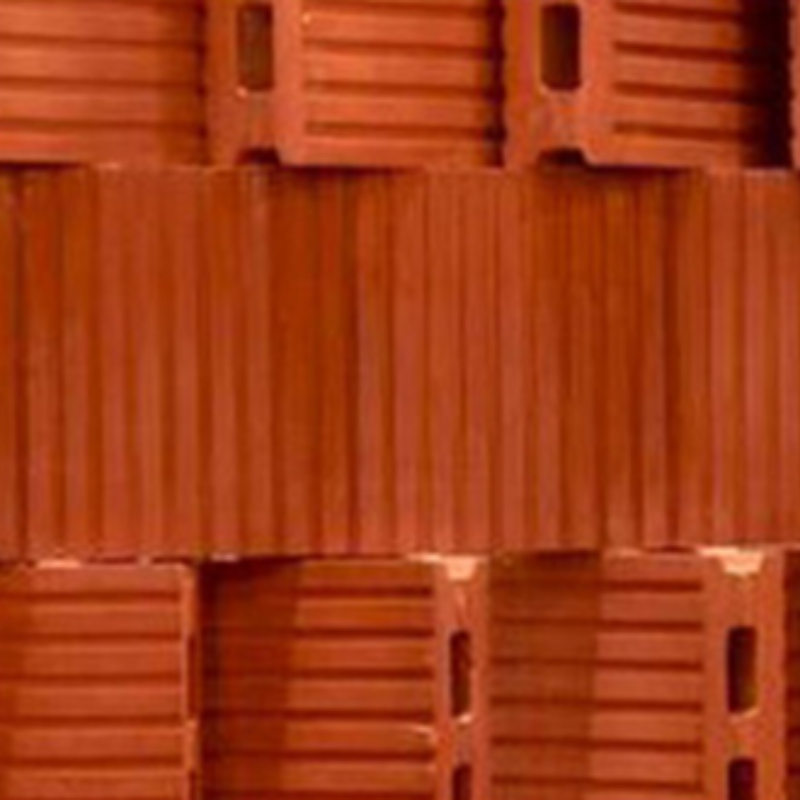

Finshes


Lighting
Lighting
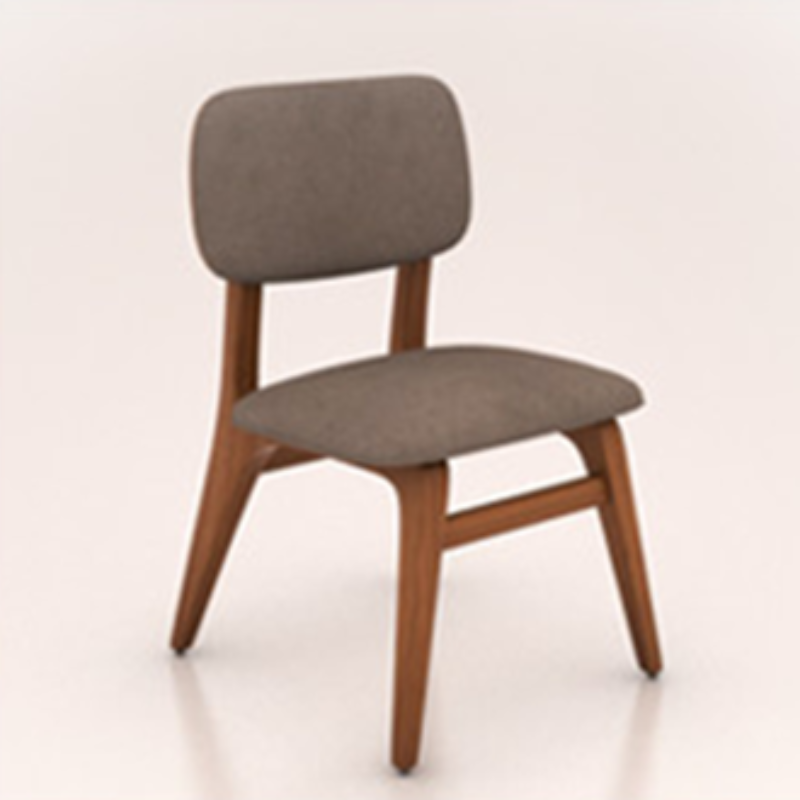

Tables and Chairs
Floor Plans & Layouts
Planning Components
Zones Overview
Designed with scalability in mind, creating a tiered mix of design elements and flexible staffing options for the perfect fit within a wide variety of DoubleTree locations.
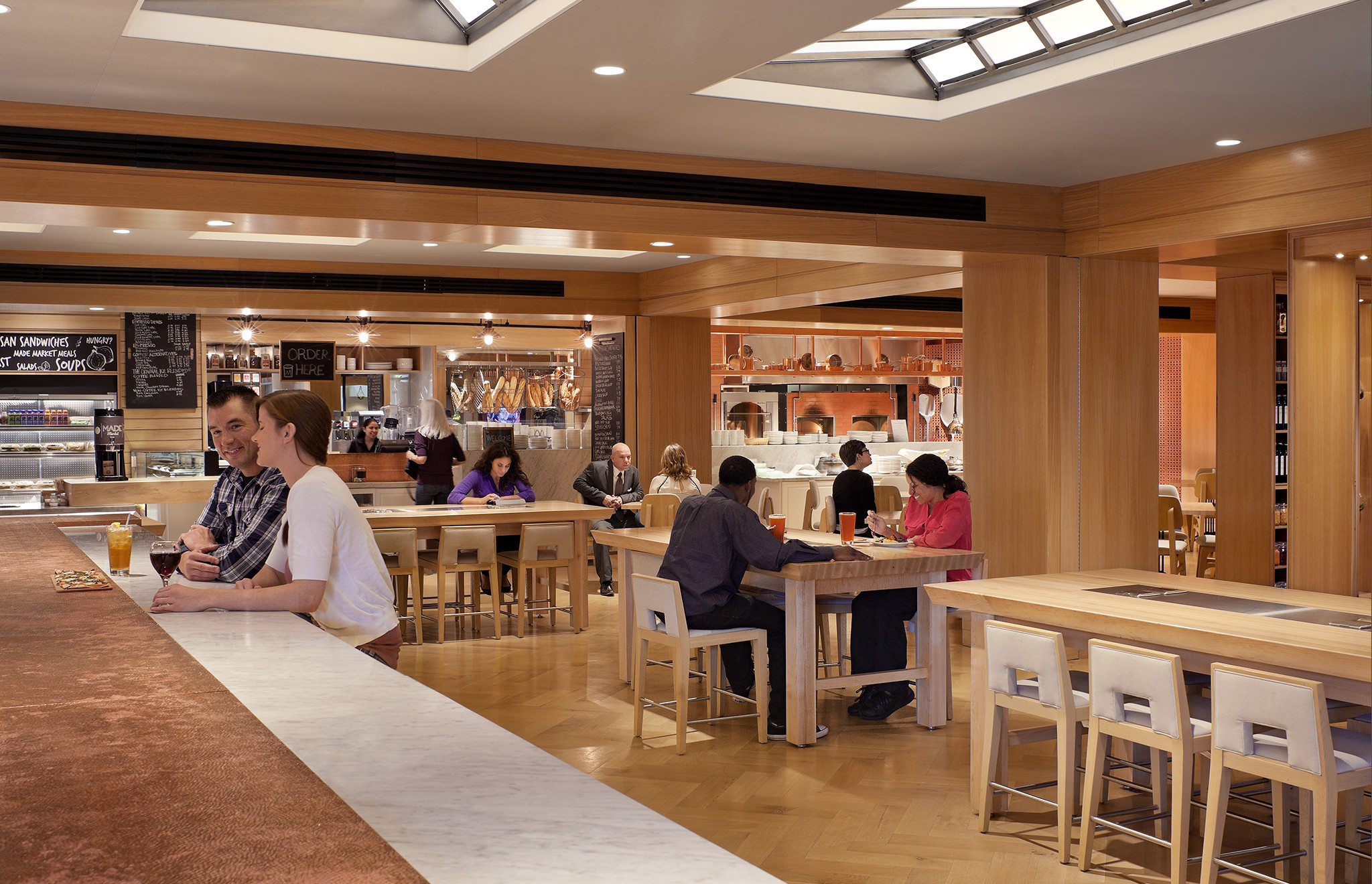
Layouts
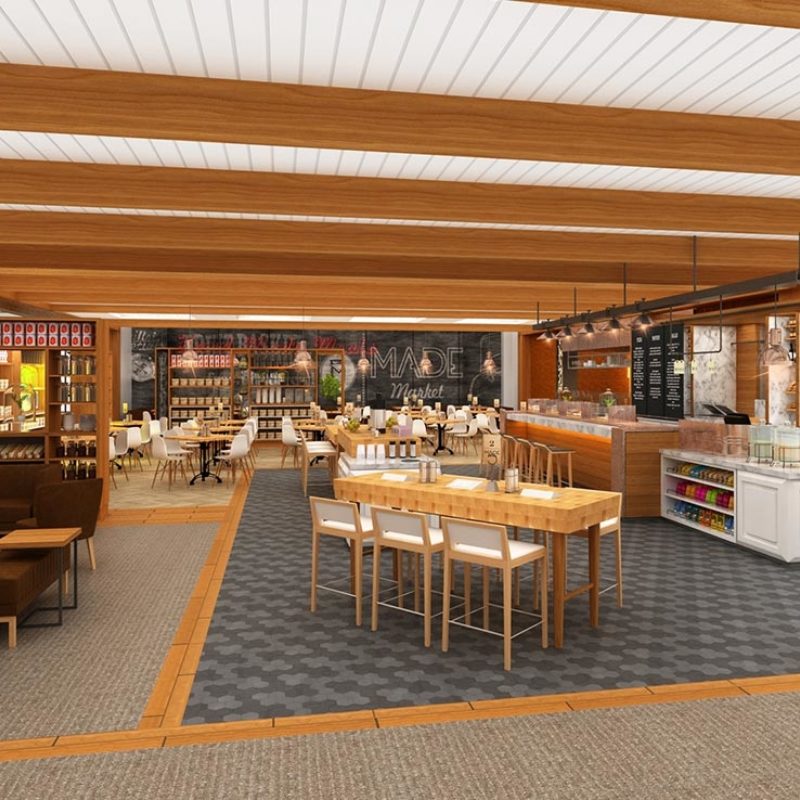
Open Plan Layout
This layout has the greatest amount of shared experience with the hotel lobby, blurring the line where the lobby ends and the market begins. Made Market is integral to the use of the lobby, and the open layout aids in ease of migration for hotel guests. The quiet individual zone is located through the lobby, and the social zone is provided by the Made Market, with some overlap occurring as the living room section extends into the lobby space.
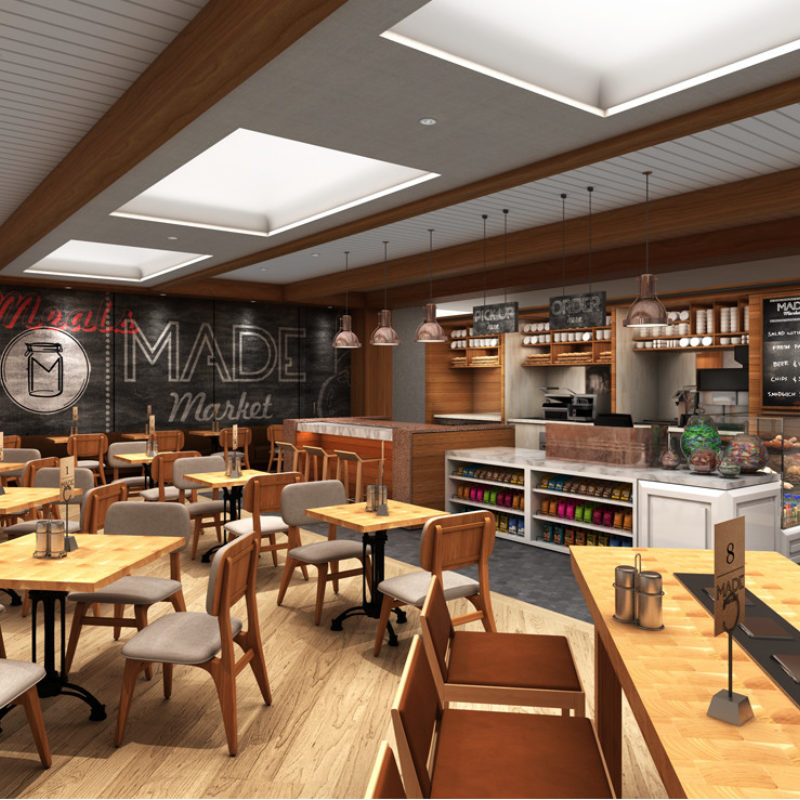
FILTERED APPROACH
Filtered Approach
Establishes the Made Market as a more independent space, creating clearer separation and branding from the hotel lobby. The guest enters and has a view of the living room and the entrance within their sightline. The quiet individual zone occurs at the farthest end from the market, and transitions into the more social zone of the lobby as it approaches the Made Market. The guest makes a conscious decision to approach either the lobby and reception or Made Market, as these spaces are created with separate branding and personality
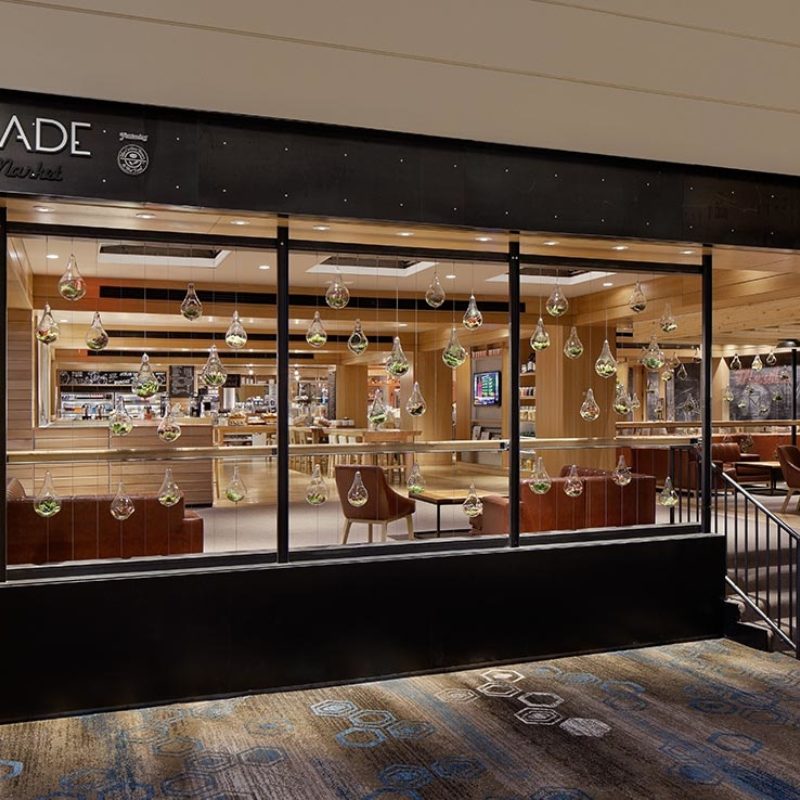
STAND ALONE LAYOUT
Stand Alone Layout
Establishes the Made Market as an independent space with the clearest separation from the hotel lobby. The guest enters and has a peripheral view of the living room and the entrance to the within their sightline. This stand-alone brand has an external presence visible to both hotel guests and the public. The quiet individual zone has some overlap with the social zone by the lobby bar, but neither encroach on the entry space and will completely maintain its own brand, which is projected outward through the facade and outdoor dining where possible.
The Market
Layout Approach
Designed with scalability in mind, creating a tiered mix of design elements and flexible staffing options for the perfect fit within a wide variety of DoubleTree locations.
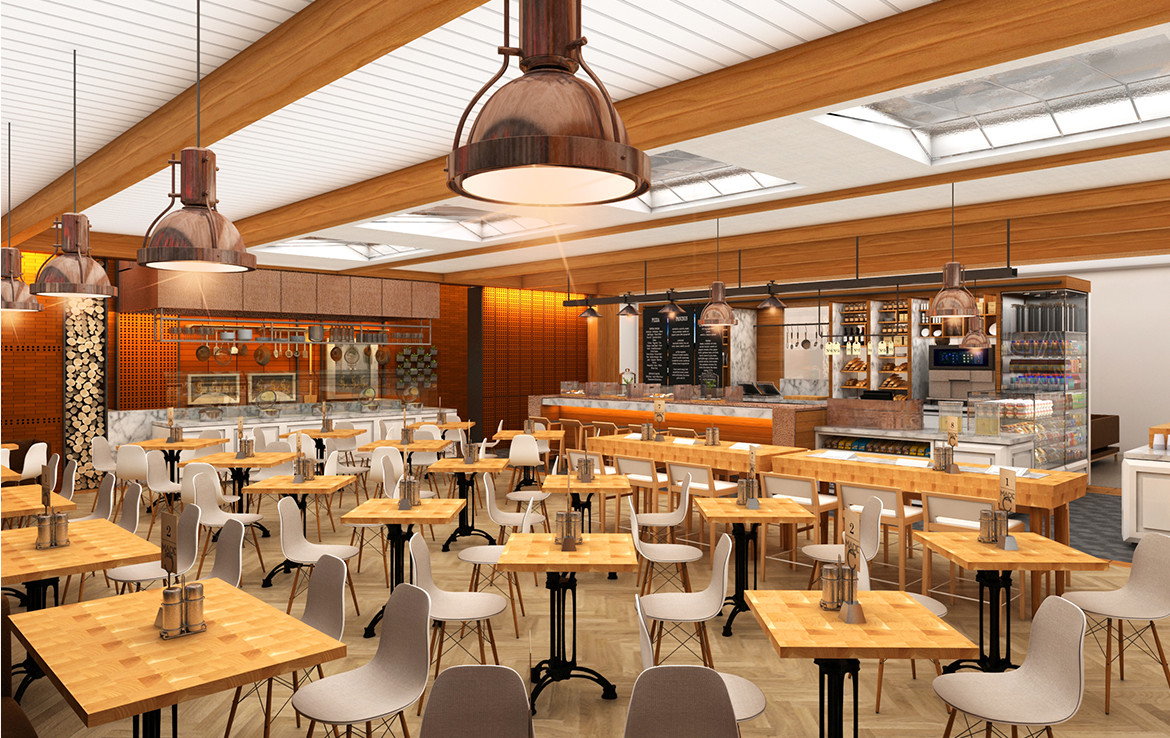
Layout Approach
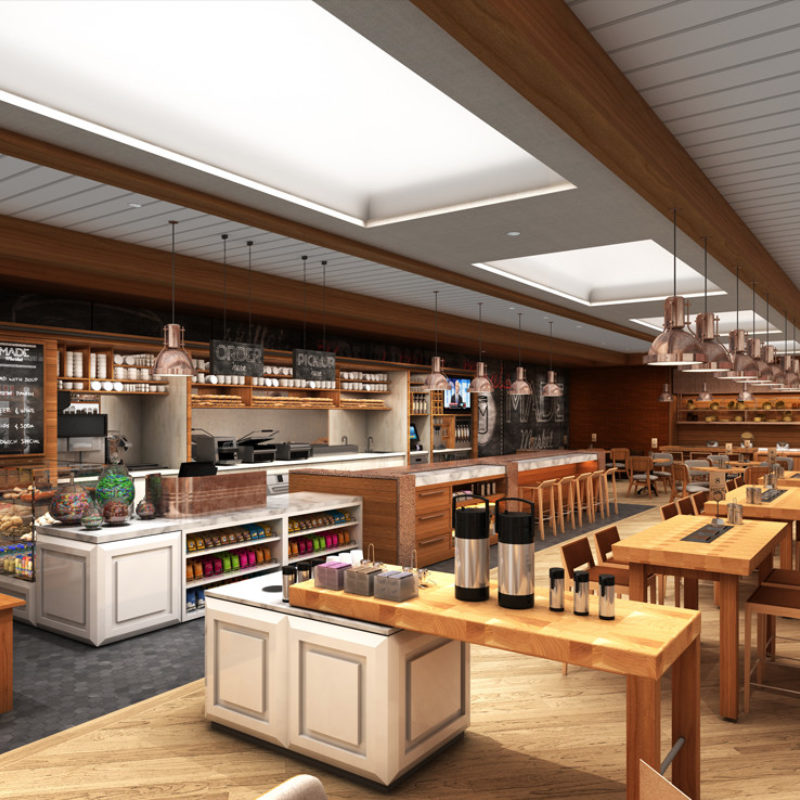
Open
Layout Approach
A scaled-down Made Market brand experience for smaller spatial footprints. This approach caters to both a local guest and the hotel guest, providing the same brand atmosphere in a condensed package. The open layout approach has greater overlap with the lobby experience, and greater aesthetic and brand sharing with the hotel. Additional food and beverage storage space is needed, and food preparation occurs at the counter.

Filtered
Layout Approach
Allows separation for locations where aesthetic overlap with the lobby is not feasible or appropriate. Additional food and beverage storage space is needed, and food preparation occurs at the counter. Market locations should retain proportions associated with seating and program area.

Filtered with Additional Options
Layout Approach
The extended version of the filtered layout includes features such as additional seating, bar, buffet, herb garden and connected living room. With the ability to add some or all of these features, Made Market can adapt to any location’s needs. Locations should retain the following proportions associated with seating and program area.

Open with Additional Options
Layout Approach
The extended version of the open layout includes features such as additional seating, bar, buffet, herb garden and connected living room. With the ability to add some or all of these features, Made Market can adapt to any location’s needs. Locations should retain the following proportions associated with seating and program area
The Pantry
Layout Approach
Allows separation for locations where aesthetic overlap with the lobby is not feasible or appropriate. Additional food and beverage storage space is needed, and food preparation occurs at the counter. Locations should retain the following proportions associated with seating and program area.
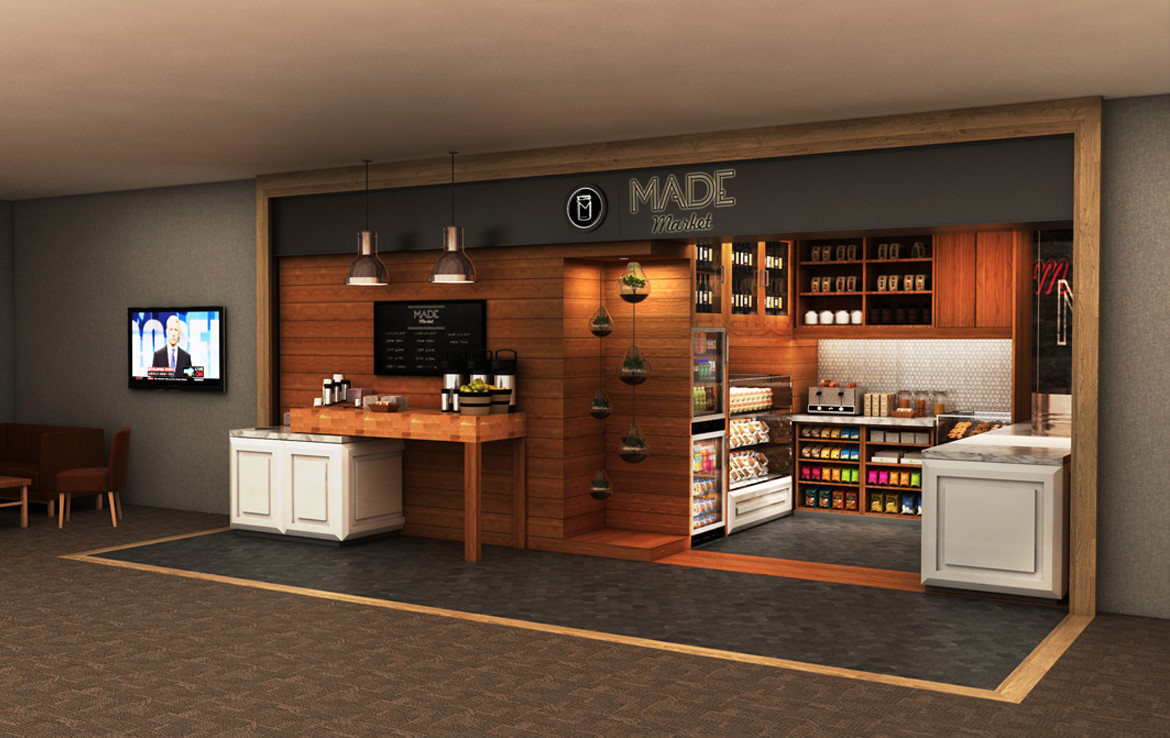
Signature Elements
Materiality & Design Elements
Made Market is about warm, natural materials that lend themselves to the comfortable welcoming nature of the brand. In its widest range within the Market, the experience begins at the front door, and bleeds through to elements of the lobby living room. Materiality and critical design elements should be utilized for the open layout strategy.
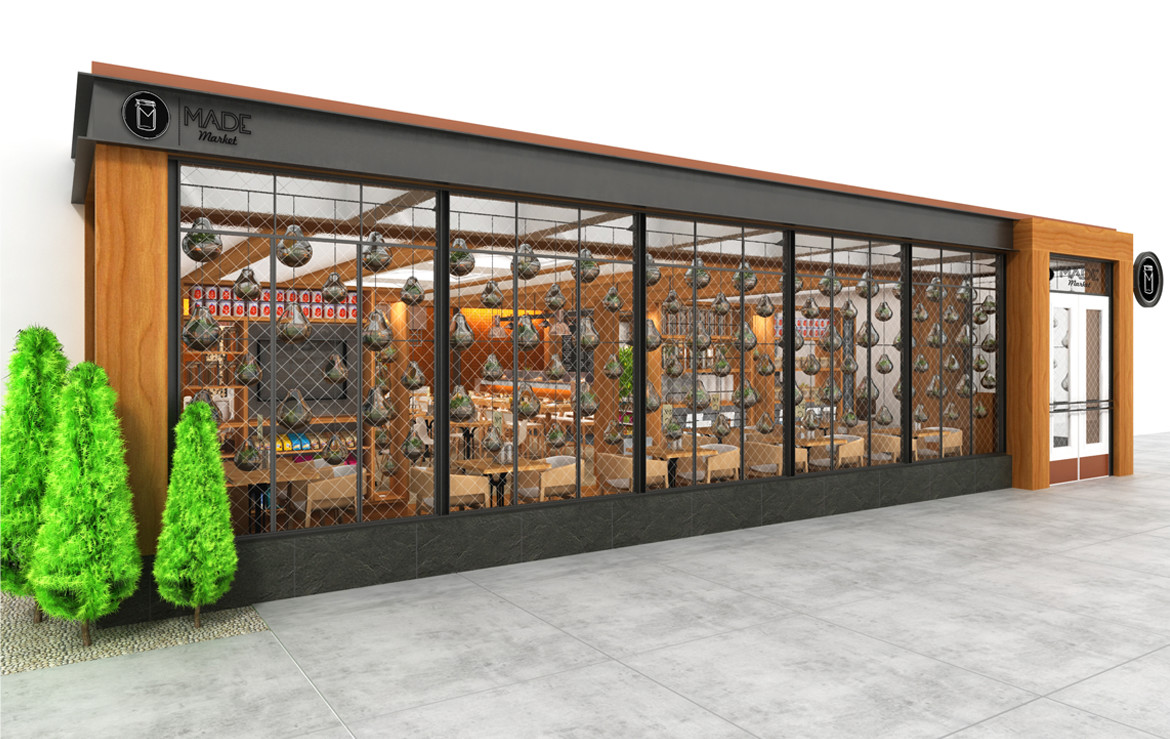
Elements

The Front Door
The front door projects a stand-alone brand expression for the dining experience within. The hanging glass terrariums create a welcoming wall that speaks to the wholesome, fresh fare to come. Rich stained woods, blackened steel, and adjacent plantings speak to the garden room that welcomes patrons into Made Market.
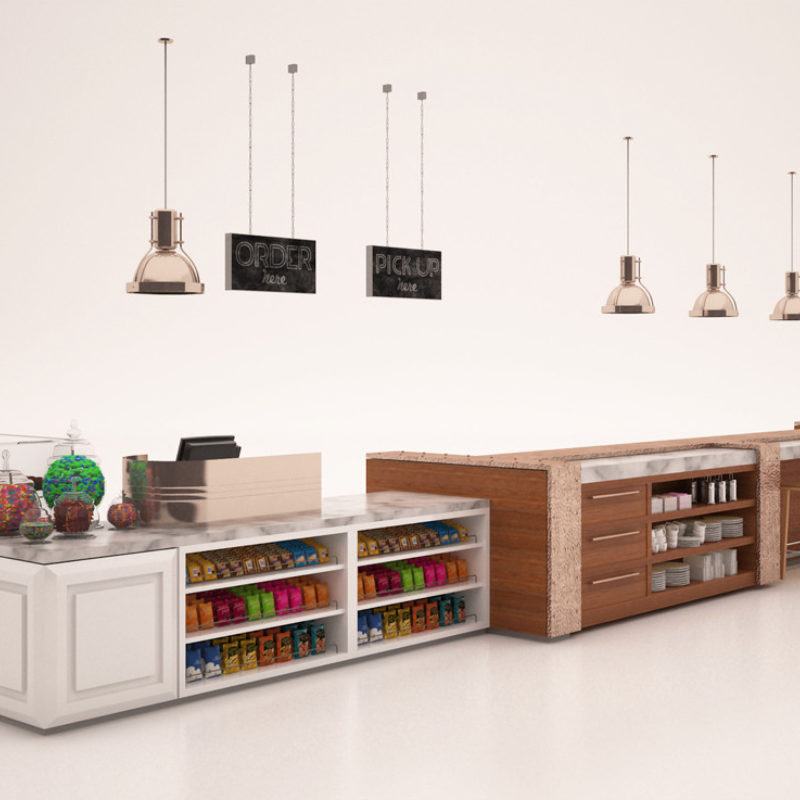
Front Bar Base
In Made Market, guests know that they can count on the market to provide quick, wholesome salads and sandwiches on-the-go. The fresh marble counter top and copper accents are a mainstay with the tasty treats that guests look forward to. A master of scalability, the market merges with the Made Market Counter.

Front Bar Extended
Guests know that they can count on the market to provide quick, wholesome snacks on the go. The fresh marble counter top and copper accents are a mainstay with the tasty treats that guests look forward to.
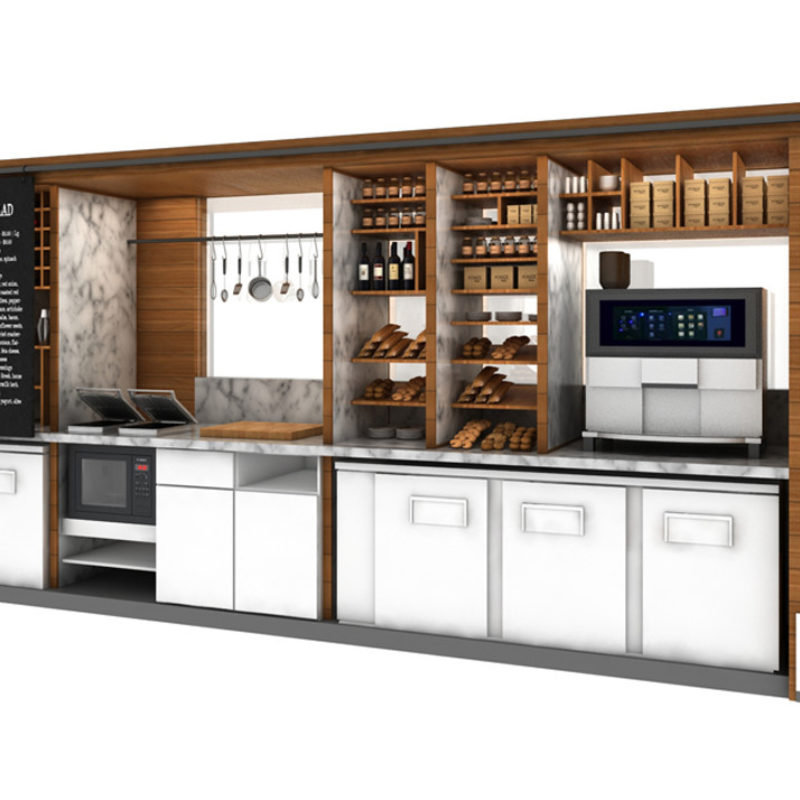
Back Bar
Day to night flexibility is key, and the back bar is pivotal in delivering the right experience to each guest, day or night. During the day, the back bar provides everything required for a cold drink or warm snack. In the evening, the signage shifts to reveal wine bottles and announce events. For travelers on the go, market cases are incorporated to vend take-away items around the clock.
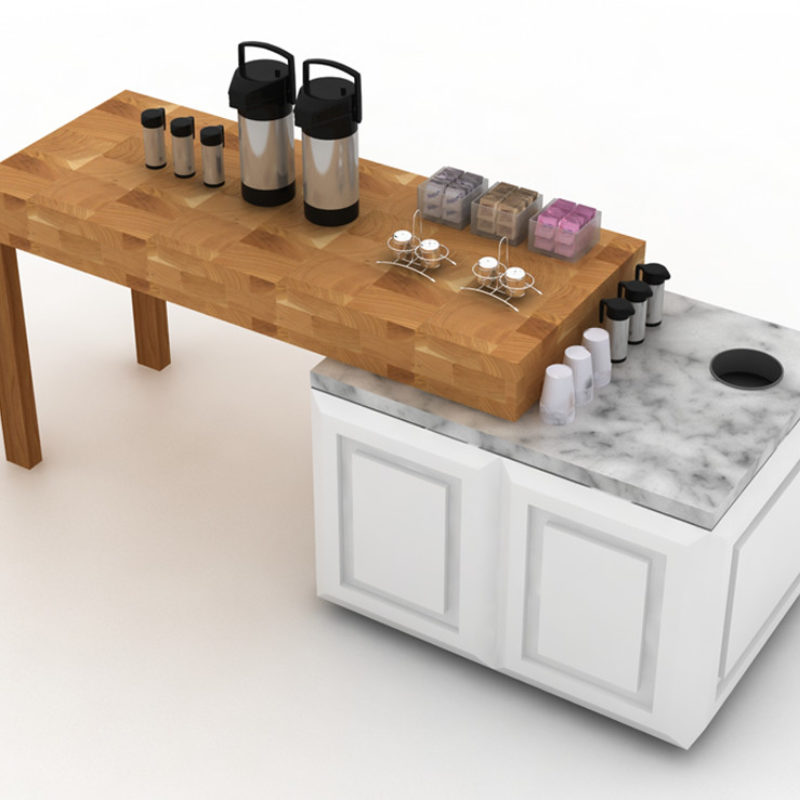
Accessories Island
Offering fresh coffee in the morning, and chilled wine in the evening, this signature element is another key in the flexibility of Made Market. It also may hold gourmet marketplace items when necessary, creating additional space for merchandising as needed by the specific layout.
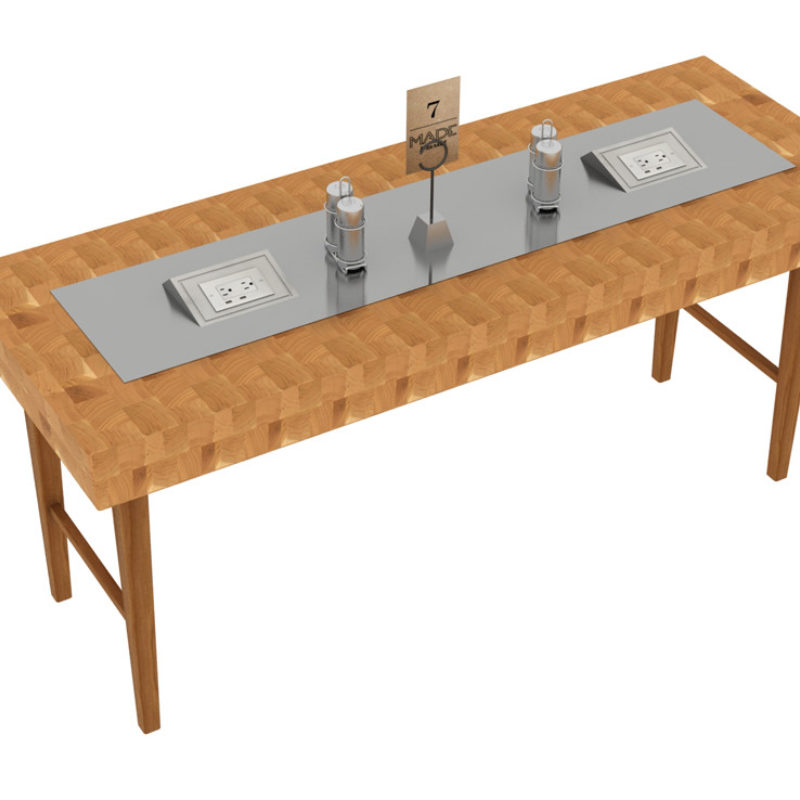
Communal Table
The communal table is not only an excellent place for groups to gather, but also a key tool in the day to night transition of the experience. In the morning, sunlight floods the warm tone of the butcher block tabletop, setting the perfect scene to enjoy the Wake up DoubleTree Breakfast. In the evening guests gather to unwind, and the center of the table holds bottles of wine ready to share. The island incorporates either charging stations alone, or charging with hidden induction heating under carerra marble, as deemed necessary at the individual location.
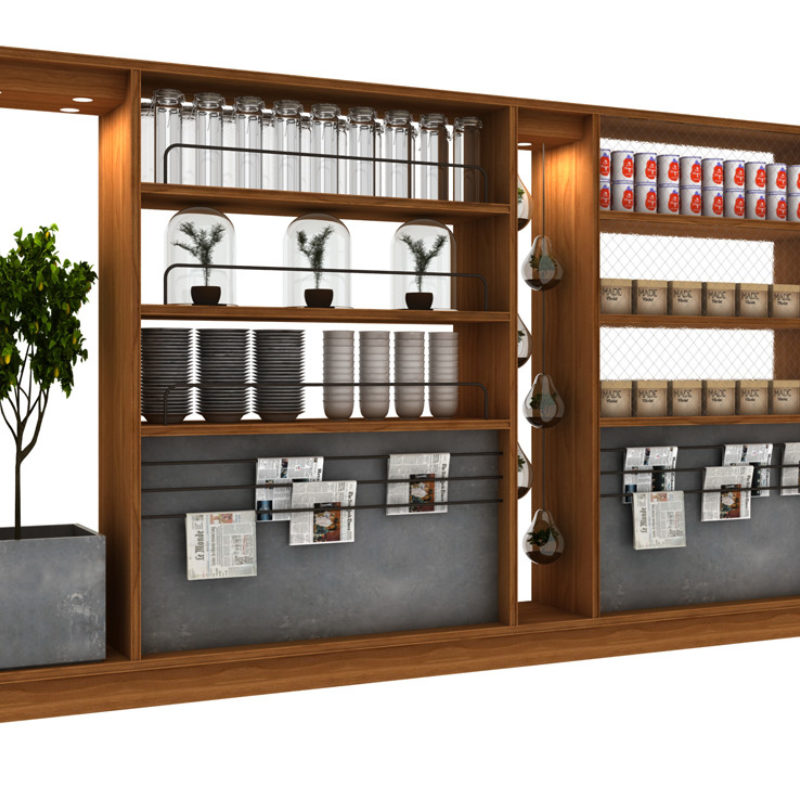
Accessory Shelving
Acting as barriers that subdivide the space allows the service team, at the manager’s discretion, to expand and contract the seating areas appropriately through the day. The shelves act as a display, showing items that reflect the brand, such as jars of dried goods, cans, hanging terrariums, and planters, and alternatively holding newspapers or televisions where deemed appropriate for the location. These shelves can be flexibly incorporated into the market area to expand the product space.
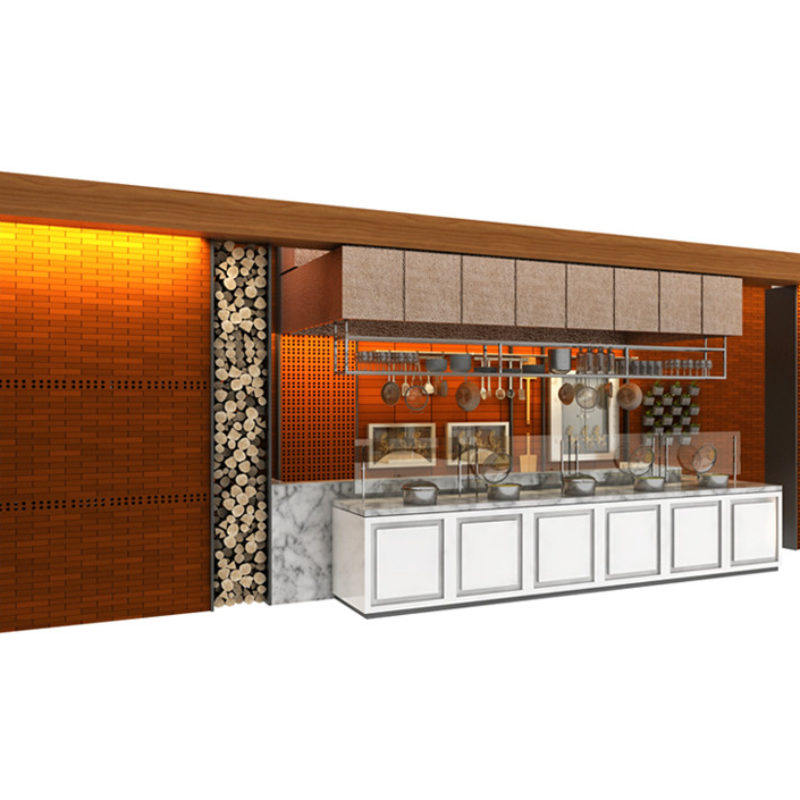
The Hearth: Display Kitchen
As the hearth is at the heart of a home, the same is true at Made Market. This element is the display kitchen, where guests encounter the fresh preparation and natural transparency that abounds within the brand. The hearth is the fireplace where guests gather for a cozy chat for a nostalgic experience that feels just like home.
Accessibility Information
ADA Standards for Accessible Design
ADA Standards for Accessible Design
ADA Standards for Accessible Design
Accessibility Information
The plans have been designed in compliance with the 2010 ADA Standards for Accessible Design. The Architect of Record must note that additional accessibility requirements may also be required by state or local codes. These plans have not been designed to incorporate any of the more stringent requirements of state or local accessibility codes or standards and the plans must be modified to meet any such codes or standards.
The term “Accessible” will be used throughout these plans to refer to the 2010 ADA Standards for Accessible Design which are mandated for places of public accommodation by Title III regulations of the ADA at 28 CFR part 36, subpart D; and must follow the 2004 ADAAG at 36 CFT part 1191, appendices B and D. DOWNLOAD STANDARDS GUIDE
The owner and Architect of Record must ensure that all modifications and changes to these plans meet or exceed the ADA and any state or local accessibility codes that are more stringent. The owner must also ensure that the facility is constructed and maintained in compliance with the ADA standards. These plans identify ADA minimum, maximum and dimensional ranges. Architects are strongly encouraged to specify dimensions that are below the maximum, above the minimum or in the middle of ranges to account for deviations that may occur during the construction process. Additional information regarding the ADA requirements is provided within OnQ: Departments / Product Management Group / Brand Standards / Accessibility Channel.
POWER AND DATA SUMMARY
Power and Data receptacles provided for the use by guests and located within the seating areas should be mounted within the accessible reach range.
ACCESSIBLE SEATING
At least five percent of the total seating should be provided as accessible seating. Although the ADA Standards currently regulate built-in furniture only, Hilton intends to apply these standards to their loose furniture as well. Accessible seating must be dispersed through the dining areas across a variety of seating/table types to provide options for accessible dining.
Tables and dining counters must allow a 30” clear width for forward approach and a clear minimum depth of 17” beneath the dining surface. The dining surface must be between 28” and 34” above the finished floor with a minimum knee clearance height of 27” above the finished floor. Accessible seating must be located on an 36” minimum width accessible route, that may reduce down to 32” wide for a length of travel of 24” maximum. Base supports for café tables with center pedestals should be selected to minimize their height and the potential conflict with footrests on wheelchairs.
BUFFET
The Buffet has been designed for elements to be located within accessible reach ranges. The architect of record should coordinate with the staff at each facility to confirm the self-service items that are intended for use on this station and verify accessible reach ranges are maintained. Height of this station may be reduced below the 34” maximum (308.3.2) to achieve accessible reach ranges specific to each facility.
Accessible seating is to be dispersed through the dining areas and provide accessible options at each primary seating zone provided. These include Marketplace seating, Restaurant seating, and Bar seating. The accessible seat count in each functional area meets a 5% minimum as shown.
The owner and Architect of Record are responsible for adapting this seating mix strategy to suit the specific conditions at each facility.
All self-service areas are to meet accessible reach ranges, including the buffet, merchandising displays, self-serve food and pos stations.


